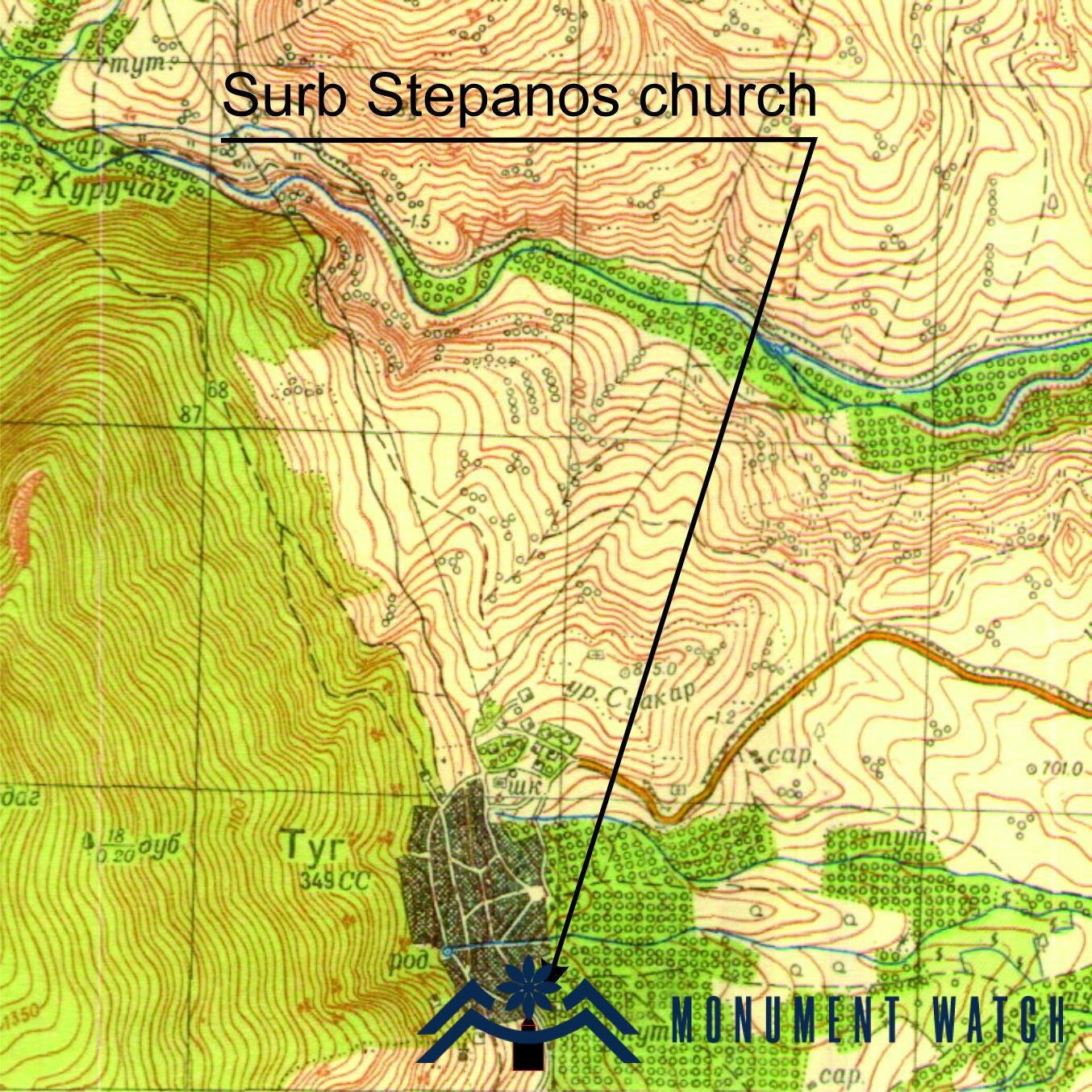St. Stepanos, Togh
Location
St. Stepanos Church is located in the south-western part of Togh village in Hadrut region of the Artsakh Republic, near the old cemetery (Fig. 1).
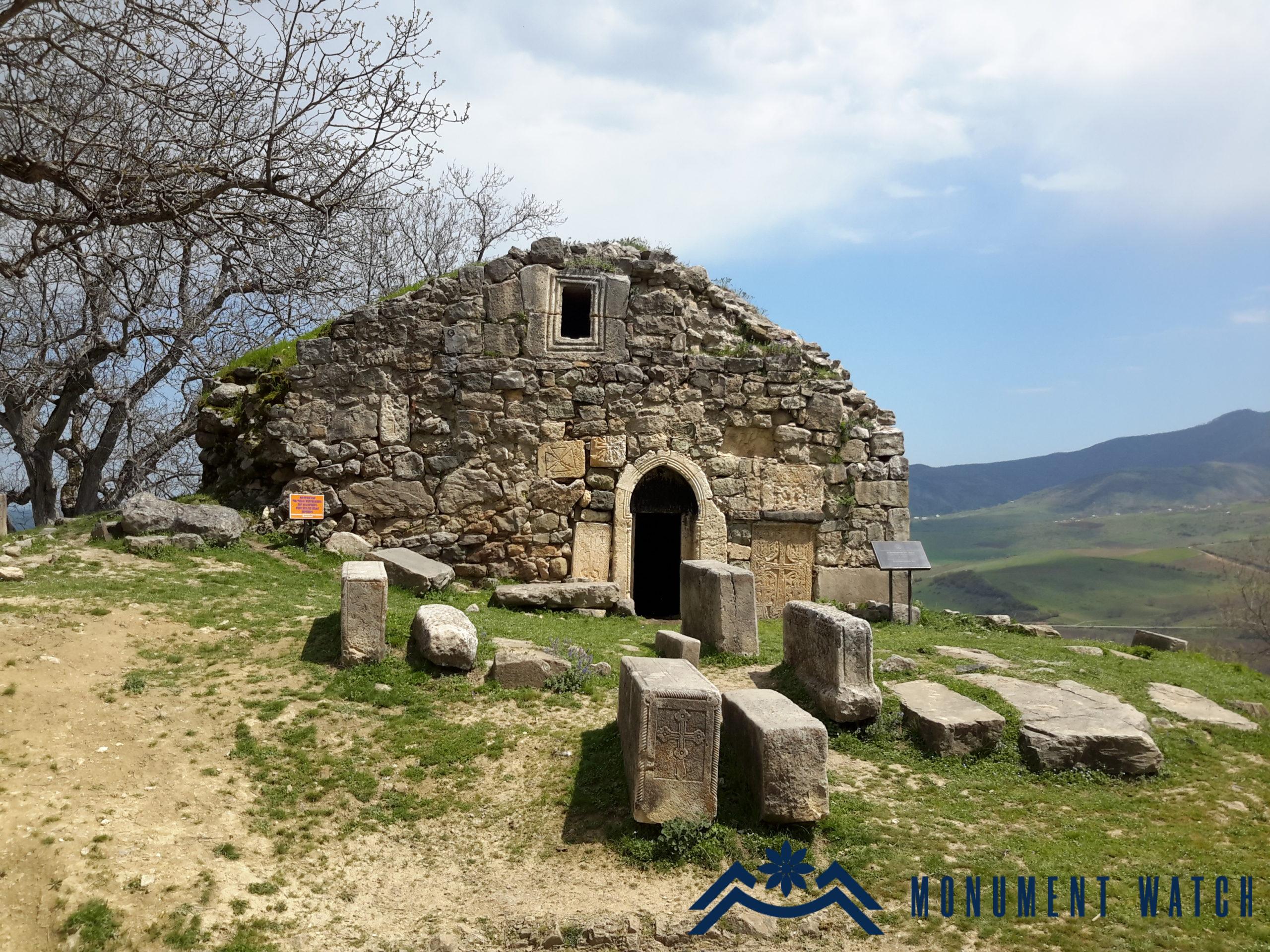
Fig. 1 St. Stepanos Church, view from the west, photo by G. Budaghyan.
Historical օverview
There is no exact information preserved on the construction of the church. Sargis Jalalyants in his book “Journey to Greater Armenia” describes that during his stay in Togh, the inhabitants told a story about the construction of the church, according to which a man from the descendants of the princes was forcibly converted to Islam, then repented and, as a sign of true faith, built the churches of St. Stepanos and Kusanats Hermitage (Jalalyants 1858, 260).
The inscription on the entrance lintel of the church reads: “In the year of 1747. In memory of the head of St. Stepanos Church, which was renovated by Melik Yegan and his son Melik Yesayi. In memory of their souls” (Barkhutaryants 1895, 78). From the latter it is supposed that the church had existed for a long time, and Melik Yegan and his son repaired the roof of the church.
Architectural-compositional examination
St. Stepanos Church is a rectangular longitudinal vaulted hall, 12 meters long and 7,8 meters wide (Fig. 2).
Internally the church is divided into two unequal naves by a T-shaped pillar, an architectural solution that has no analogues. Gravestones have been preserved in the narrow northern part. It can be assumed that this narrow hall played the role of a unique graveyard-narthex. Due to the slope of the place, the floor of the church is lower than the yard mark, on the western side it is stuck in the ground at a depth of 1,5 meters. The only entrance to the church opens from the western facade, to the right a little far from the center. The hall is crowned with an altar on the eastern side and the two vestries adjacent to the latter from the north and south. The altar has a pronounced semicircular shape, with vestry room niches on both sides – on the north and south. The structure is built of hewn and rough stones. The arches, the entrance and the windows of the vault are polished. The pillars are built on the principle of masonry, the outer faces are made of polished stones, the core is filled with lime mortar. More than 50 khachkars, cross-sculptured slabs, gravestones, parts of early Christian monuments are embedded in the walls (Figs. 3, 4). Some of them have inscriptions of the 15th-17th centuries (CAI 1982, 176), which testify that the church was built on the site of earlier structures whose stones were reused during the construction of the new church.
The khachkar embedded on the western facade – in the wall on the right side of the entrance stands out in size and artistic design, which has the following inscription: “In the year of 1531, I – Friar Daniel erected it” (CAI, 1982, 177, Fig. 4)
The gravestones of the old cemetery preserved in the surroundings of the church have thematic compositions, some of which are inscribed. The composition of the gravestone to the north-west of the church presents the tools and water jug of the master metallurgist (Fig. 5), and the inscription informs “Master Yehanes, in the year of 1545”.
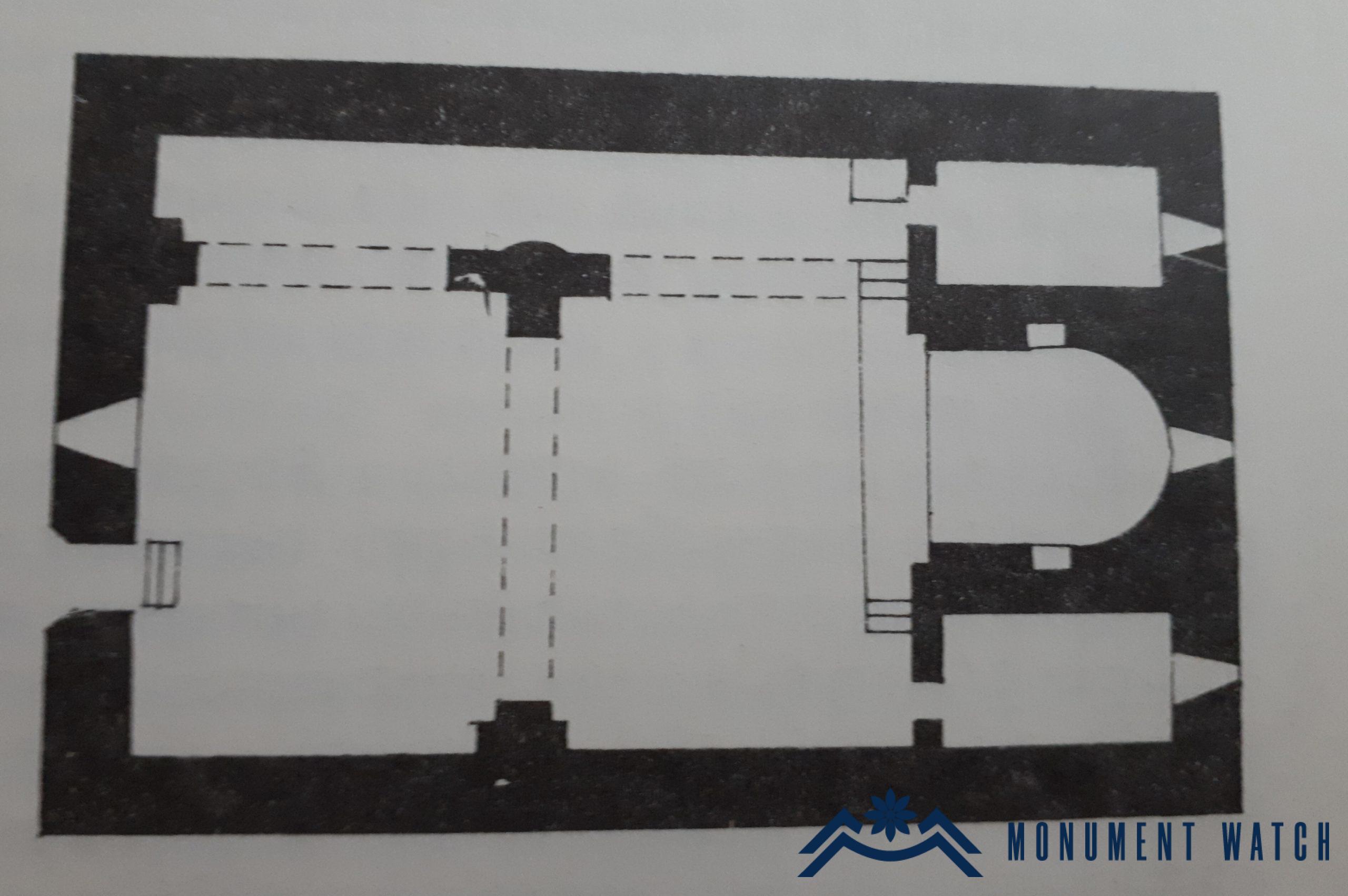
Fig. 2 The plan of St․ Stepanos Church, Sh. Mkrtchyan, Historical and architectural monuments of Nagorno Karabakh, Yerevan 1985, p. 77.
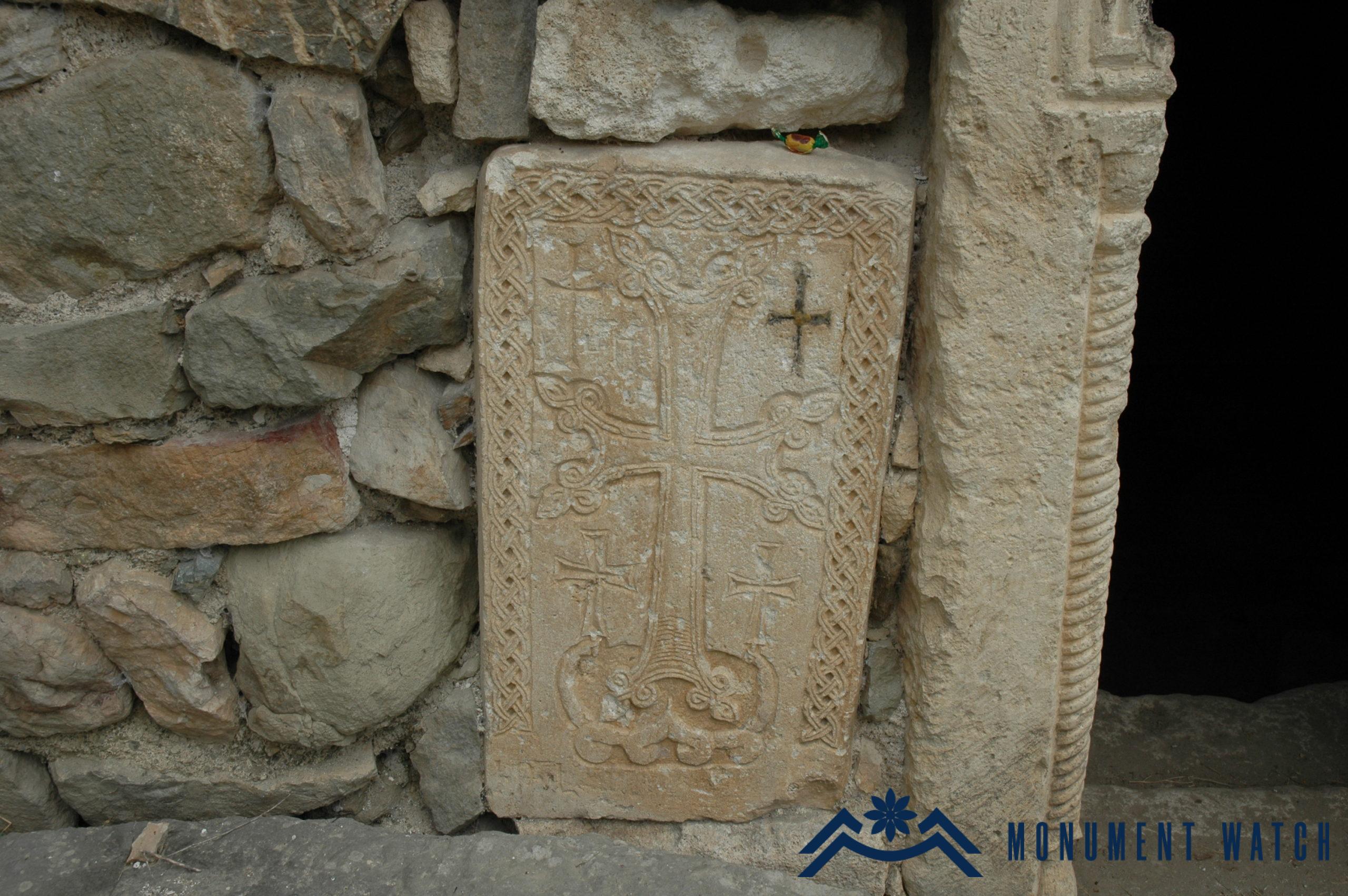
Fig. 3 On the western wall of the church, the khachkar embedded to the left of the entrance, photo by H․ Petrosyan.
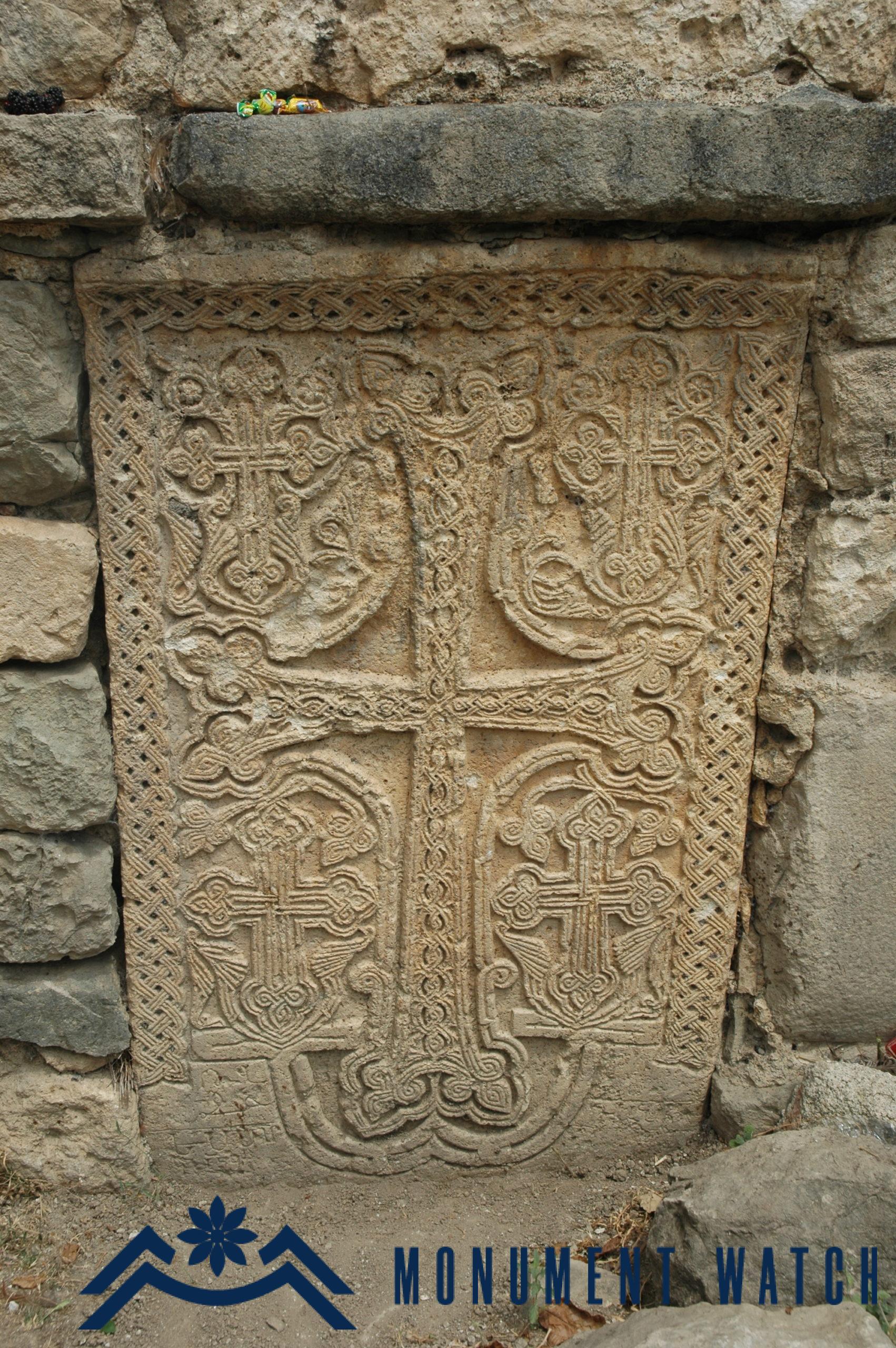
Fig. 4 On the western wall of the church, the khachkar embedded to the right of the entrance, photo by H․ Petrosyan.
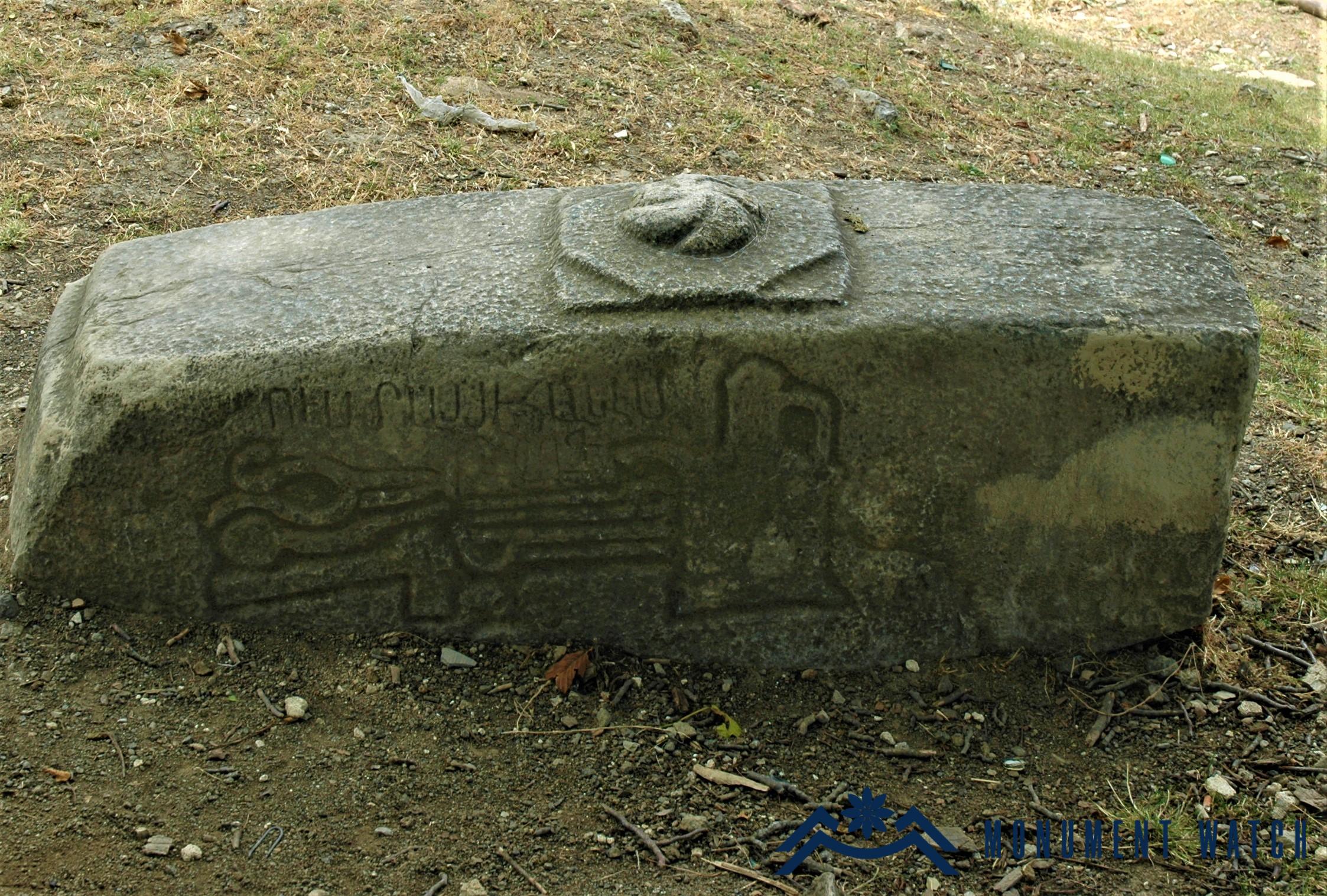
Fig. 5 The gravestone of master Yehanes, photo by H․ Petrosyan.
The condition before, during and after the war
The church was not damaged during the first and second Artsakh wars.
Bibliography
- Barkhutaryants M., Artsakh, Baku, 1895.
- CAI 5, 1982 – Corpus of Armenian Inscriptions, Rls. 5, Artsakh, compiled by S. Barkhudaryan, Yerevan.
- Mkrtchyan 1980 – Mkrtchyan Sh., Historical and architectural monuments of Nagorno Karabakh, Yerevan.
- Jalalyants 1858 – Jalalyants S․, Journey to Greater Armenia, part B, Tiflis.
Togh
Artsakh
